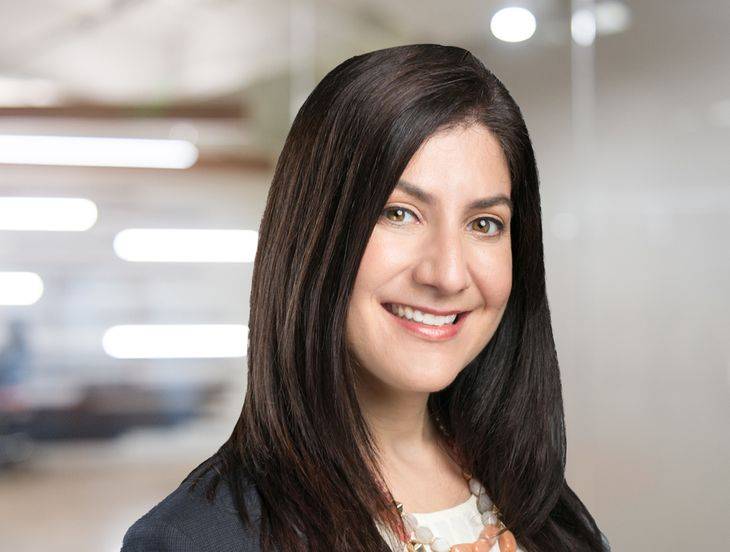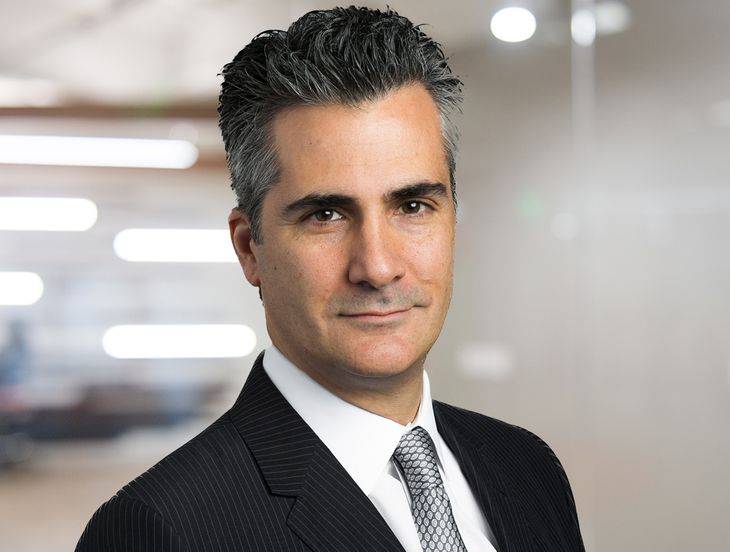A Primer on New York's Impending Paid Family Leave: Are Employers Prepared?
Publication
5.03.17
On April 4, 2016, Gov. Andrew Cuomo signed the New York Paid Family Leave Benefits Law (PFLBL), guaranteeing job protected, paid family leave (PFL) for virtually all private sector employees, effective Jan. 1, 2018. These benefits fully phase in over a four-year period—by Jan. 1, 2021—and will increase annually in both maximum duration of leave and the amount of weekly paid benefits. New York will join California, Rhode Island and New Jersey as the four U.S. states providing PFL benefits. Unless other states act by 2021, New York will have the longest and most comprehensive PFL program in the country.
When fully implemented, the PFLBL will provide covered employees with up to 12 weeks of paid, job protected leave each year to care for a family member with a serious health condition, to bond with a child during the first year after the child's birth, adoption or foster care placement, or for any qualified exigency (as defined under the FMLA) arising from a family member's call to active military service. Unlike the FMLA, the PFLBL does not provide leave for the employee's own serious health condition; for such situations, employees instead may be eligible for benefits under New York's existing statutory short-term disability scheme.
On Feb. 22, 2017, the NYS Workers' Compensation Board published proposed regulations that explain and clarify key elements of the PFLBL (proposed regulations), which were open to public comment until April 8, 2017. Though subject to potential revision, the proposed regulations offer insight about implementation of the PFLBL.
Employer Coverage
Private employers with at least one employee will be required to provide PFL benefits under the new law. Employers may choose to either purchase a PFL insurance policy to be financed through employee payroll deductions or to self-insure. Employers may begin collecting the weekly employee contribution on July 1, 2017. While the maximum deduction has not been set yet, it is expected to be modest. Employees may not opt out, except in the limited circumstance where an employee's regular work schedule is less than the threshold for eligibility (e.g., short term or temporary employees).
Eligibility and Benefits
To be eligible for benefits, employees must have worked for a covered employer full-time for 26 consecutive weeks, or part-time for at least 175 days. The FMLA, by comparison, requires a 12-month waiting period prior to eligibility, along with certain hours worked requirements.
Beginning Jan. 1, 2018, employees will be eligible to take up to eight weeks of paid leave during a window of 52 consecutive weeks. The maximum leave period increases to 10 weeks as of Jan. 1, 2019 and then to 12 weeks as of Jan. 1, 2020—of course, employees who are eligible under the FMLA can take up to 12 weeks of job protected leave, but the period beyond the PFLBL leave would remain unpaid.
The proposed regulations establish that the 52 consecutive week period will be measured on a rolling backward basis—that is, the amount of leave available is computed retroactively with respect to each day for which benefits are currently being claimed. Currently, there is no safe harbor for alternative calculations such as "calendar year" or "rolling forward" methods, which some employers use in compliance with FMLA obligations.
Similarly, the maximum level of weekly paid benefits increases throughout the phase-in period. Employees will be entitled to a percentage of their average weekly wage, not to exceed a percentage of the New York state average weekly wage (NYSAWW):
- As of Jan. 1, 2018, the lesser of 50 percent of the employee's average weekly wage or 50 percent of the NYSAWW;
- As of Jan. 1, 2019, the lesser of 55 percent of the employee's average weekly wage or 55 percent of the NYSAWW;
- As of Jan. 1, 2020, the lesser of 60 percent of the employee's average weekly wage or 60 percent of the NYSAWW; and
- As of Jan. 1, 2021, the lesser of 67 percent of the employee's average weekly wage or 67 percent of the NYSAWW.
The NYSAWW is updated annually by the NYS Department of Labor and is currently $1,296.48. The FMLA, in comparison, only provides unpaid leave.
Eligible PFL Circumstances
As noted above, PFL may be taken to (1) care for a family member with a serious health condition; (2) bond with a child; and (3) attend to a qualifying exigency based on a family member's call to active military service.
The proposed regulations detail what qualifies as a serious health condition, including either temporary or chronic physical and mental conditions that result in a certain degree of incapacitation and require certain levels of medical care. Employees are generally not eligible for PFL involving the family member's routine examinations, cosmetic treatments or minor illnesses (e.g., a common cold).
In the case of leave for adoption or foster care placement, an employee can take PFL even prior to the actual event to complete tasks attendant to the event (e.g., court appearances or distant travel necessary to complete an adoption). Conversely, an employee is not entitled to benefits under the PFLBL in connection with their own pre-natal conditions (however, an employee may be eligible for PFL to care for a family member with pre-natal conditions, if constituting a serious health condition).
Notification Requirements
To utilize PFL, an employee must give the employer at least 30 days advance notice prior to commencement of leave, unless the qualifying event is unforeseeable; if unforeseeable, the employee must provide notice as soon as practicable. An employee need not expressly assert rights to PFL or even mention family leave to trigger their rights under the PFLBL. If the employee provides notice of a potentially qualifying event, the employer must seek further information from the employee to determine if it is PFL eligible.
The proposed regulations detail the application process, which entails submitting a claim form to the insurer or self-insured employer along with prescribed documentation to substantiate an acceptable leave. Within 18 days of an application for benefits, employees will be notified of a decision on the claim from the insurance carrier or self-insured employer.
Employer Obligations
In addition to providing the leave and benefits described above, the PFLBL imposes numerous attendant obligations on employers, including the following: (1) just like FMLA leave, PFLBL leave is job protected—that is, upon an employee's return, she/he must be reinstated to the position held immediately prior to leave, or a comparable position with comparable benefits, pay and other terms and conditions of employment; (2) employers cannot discriminate or retaliate against employees because they filed for or received PFL benefits; (3) the PFLBL requires employers to maintain existing health insurance benefits during an employee's leave, so long as the employee continues to make regular premium contributions; (4) employers must notify employees and applicants about their rights under the PFLBL; (5) if a company handbook, policy or manual describes employee benefits or leave rights, the employer must include information about PFLBL leave, and if an employer does not maintain such written policies, it must provide separate written guidance to employees about their rights and obligations under the PFLBL; and (6) employers must post a notice concerning PFL in a form to be prescribed by New York state, in an easily viewable location.
Employers that fail to provide coverage for PFL benefits will be subject to a penalty up to .5 percent of the employer's total weekly payroll for the period of non-compliance, plus an additional fine not to exceed $500, to be paid into the Special Fund for Disability Benefits. Additionally, employers that fail to provide coverage will be directly liable to employees for payment of eligible benefits for any period of non-compliance. Employers that fail to maintain health insurance benefits for an employee on covered leave will be directly liable for the employee's medical costs while on leave.
Interaction With Other Laws
FMLA: Because of the overlap in qualifying reasons for leave eligibility, employees may be eligible for leave under both the PFLBL and the FMLA. Employers that wish to designate leave under the PFLBL as FMLA leave must notify the employee of such concurrent designation and provide all notices required under the FMLA. If the employer fails to provide this notice, the employer may be deemed to have permitted the employee to receive PFL benefits without concurrently using eligible FMLA leave—resulting in the possibility that an employee may be able to stack leaves to take more than 12 weeks of job protected leave.
Disability Benefits: Employees may not concurrently receive disability and PFL benefits. If an employee is eligible for both types of benefits during the same 52-week period, an employee shall not receive more than 26 weeks of combined disability and PFL benefits during that time.
Paid Time Off: Under the FMLA, an employer may compel employees to use paid time off during their unpaid FMLA leave. The PFLBL, in contrast, allows employees to choose whether to use available paid time off in lieu of receiving PFLBL benefits. An employer cannot require employees to use paid time off while receiving PFL benefits. If an employee elects to use paid time off, the employer can request reimbursement from its insurance carrier for any benefits due to the employee under the PFLBL.
How Employers Should Prepare
New York employers should communicate with their disability insurance providers and prepare to obtain coverage for PFL benefits, or alternatively, consider whether to self-insure. Employers should prepare to begin payroll deductions to fund PFL coverage and discuss these deductions with payroll providers.
Additionally, employers should review existing leave policies and practices, including existing FMLA policies, to achieve compliance with the PFLBL and to determine compatibility with existing policies, in light of the PFLBL and the proposed regulations. Employers that operate in multiple jurisdictions should be especially careful in carving out these benefits for their New York employees, and be certain that leave administration across jurisdictions differentiates the New York requirements.
Employers must prepare to comply with the posting and notice requirements of the PFLBL and keep track of developments through finalization of the regulations. It's important to designate at least one person as responsible for compliance, whether or not in conjunction with counsel. This person can also coordinate with the payroll function (especially if that function is run outside of New York) to ensure the appropriate resources are in place.
Finally, and importantly, employers should not forget about the end users of the PFL benefit—making sure employees are educated about the law—from the deductions that will commence shortly, to the employees' obligations under the PFLBL and their benefits entitlement. This will help smooth the transition and reduce misunderstandings that could sap resources and create unnecessary conflicts down the road.
Reprinted with permission from the May 3 issue of New York Law Journal © 2017 ALM Media Properties, LLC. Further duplication without permission is prohibited. All rights reserved.
Related People
-
- Melissa Camire
- Partner
-
- Michael R. Marra
- Co-Regional Managing Partner

